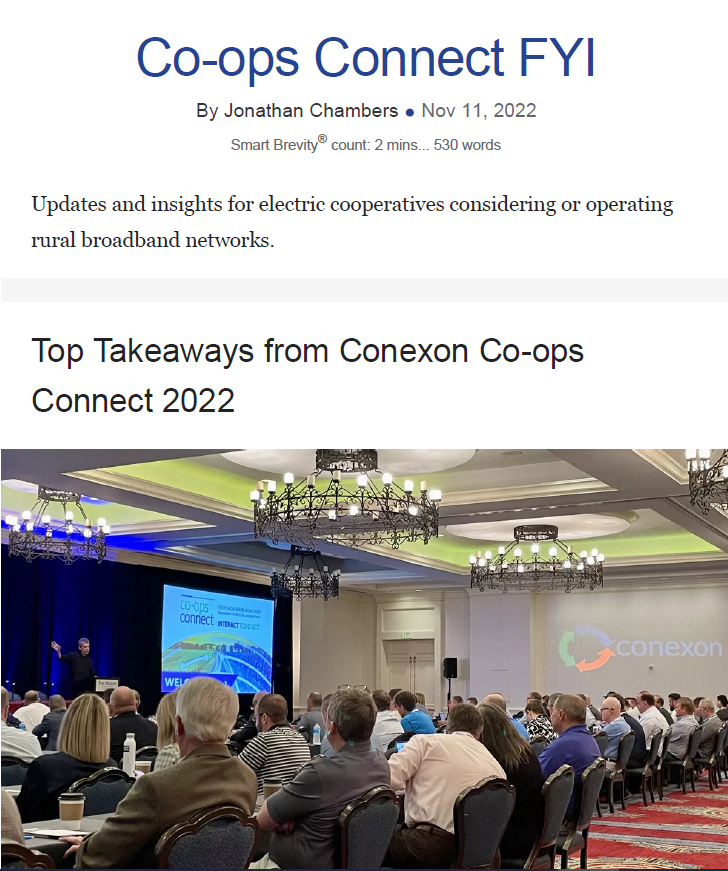Top Takeaways from Conexon Co-ops Connect 2022
November 10, 2022
More than 160 electric cooperative leaders, industry vendors, and Conexon staff representing more than 40 co-ops nationwide gathered in San Antonio this week for a two-day workshop focused on broadband strategy and education.
If you weren’t able to attend Co-ops Connect 2022 (or even if you were), here are five takeaways directly from your fellow electric cooperatives deploying or building fiber broadband:
1. “If we don’t do it, no one else will.”
— That has been a refrain of electric co-ops since the 1930s. Even co-ops that had previously not wanted to get into broadband have found it necessary.
— As one CEO recounted, in their service territory 30 of 100 high school seniors were unable to graduate in 2020 because lack of internet access made it impossible to finish school.
2. “I was told that I’d have to get 60 poles changed the first week, 90 the second week, then get to a pace of 120 per week after that.”
— No one does make-ready construction like co-ops. This year, our clients will change out nearly 200,000 poles for their broadband projects. The pace of make-ready construction by electric co-ops is unparalleled.
— If states are looking for ways to spend BEAD funds, Kentucky’s pole replacement program is a good model for other states.
3. “Co-ops can compete against anyone.”
— Missouri’s United Electric Cooperative has 7,000 members and a population density of less than 2 meters per mile. Yet its broadband subsidiary now has over 26,000 subscribers and is planning to build into St. Joe, Missouri, which has a population of over 70,000.
— To those who think co-ops’ inherent advantage in broadband is due to their ownership of poles, co-ops like United Electric have proven that a co-op’s true competitive advantage is the ethos of service.
4. “I don’t know what smart grid will become, but I know I’ll be in a good position with a fiber network.”
— Whether it is connectivity to all electric devices, voltage control, or a self-healing grid, smart grid and fiber broadband go hand in hand.
— The large number of electric co-ops deploying fiber puts the electric co-op industry at the forefront of smart grid experimentation and innovation.
5. “The BEAD program is an excessive amount of funding; states will struggle to spend it all.”
— The federal government, having committed funding for rural broadband through the CAF, RDOF, ACAM, CARES, and ARPA programs, will allocate BEAD funds to states by the middle of 2023.
— Once the areas funded by the other programs are removed, the only places most states will be able to spend BEAD are in areas served by cable broadband. Cable will go to war over that.
November 11, We Salute Our Vets
Conexon and our partner cooperatives are privileged to have many veterans representing all branches of military service on our teams. We are ever grateful for your service and commitment to our country.
